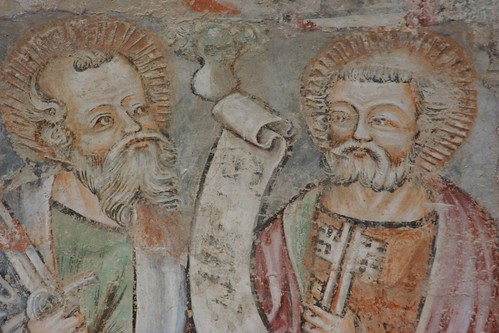It is rare that the excavation of a simple medieval parish church makes national news in Hungary. However, this is precisely what is happening these days with the remains of the medieval church of Bonyhád in southern Transdanubia: largely because there seems to be no time and no way to fully excavate and preserve the ruins. This is because of recent changes in Hungarian heritage laws, which favor construction and development instead of heritage protection.
The remains of the church of Bonyhád were discovered during the construction of a new exit from route 6. Current legislation only gives 30 days for any archaeological investigations in such situations, with a possibility of further extension granted by the Ministry of Culture. This extension has to be given by the Minister himself within 8 days - if he does not grant it, construction can continue without delay. The remains of the church of Bonyhád were discovered in late September. Thanks to the cooperation of a team of Hungarian archaeologists, the excavation was carried out during the last two weeks - but now work is coming to an end, as the construction of the road will commence on Wednesday.
 |
| Photo: István Huszti / Index |
So let's see what was found: excavations have brought to light the nave of a medieval church (the sanctuary lies under the main road built a long time ago). It seems that the edifice was the medieval parish church of Bonyhád, which in the Middle Ages was located at some distance from the current center of the settlement. The church must have been destroyed in 1542 when the Ottoman Turkish army pushed through this area. The church burnt down, its walls were torn down some time later, and the site was abandoned. The site soon filled up with mud - thus the remains were preserved in good condition. A keystone and other fragments of the late Gothic vault of the church were found, along with the remains of the bell, as well as stone carvings from the portal of the church and other structural elements. Here are some photos of the stone carvings:
The excavation was one of the first times when the new heritage laws of Hungary were applied in a real-life scenario, and it became obvious that the regulations are not sufficient to protect archaeological heritage. Despite protests from the Association of Hungarian Archaeologists and even a statement by the ombudsman, it seems that the site will have to covered over before the excavations can fully be completed, as construction will resume as early as next week. Maybe the ensuing debate and national attention will help lawmakers rethink the current regulations.
 |
| Photo: István Huszti / Index |









